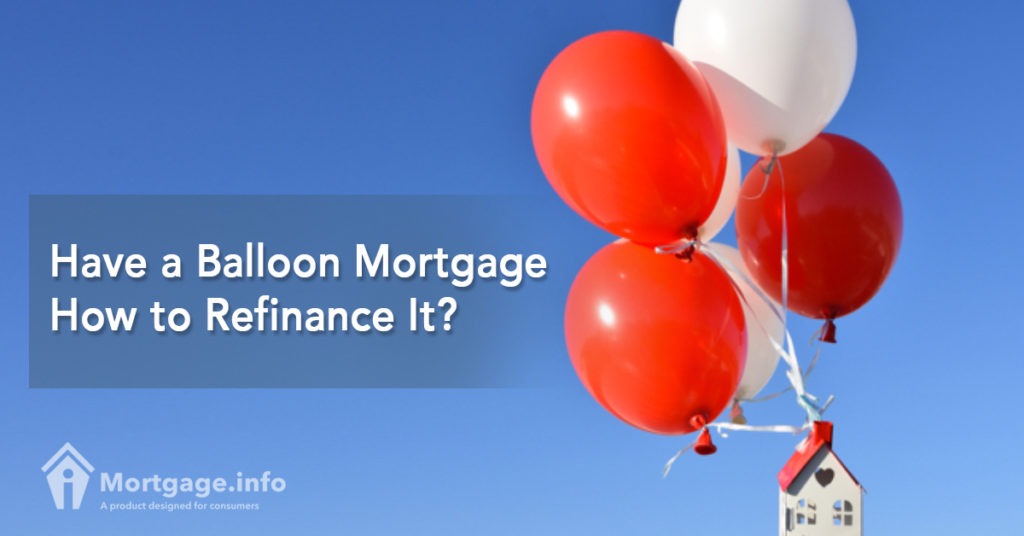A loan that is over before it fully gets paid, such is the concept of a balloon mortgage. But, really, the unpaid balance in the form of a balloon payment awaits you when the loan term is up. Against this backdrop, homeowners with balloon mortgages have two major options: to sell the home or to refinance into a more traditional loan product. Let’s examine the route homeowners who go for the refinance option take.
A Quick Look at Balloon Mortgage
Although deemed an exotic product in today’s mortgage market, balloon mortgages have not lost their shine for a certain segment of homeowners.
Balloon mortgages are short-term home loans spanning five to ten years, making them ideal for those planning to occupy their homes within that period. They are a bargain between fixed-rate and adjustable-rate mortgages.
Why? They have lower interest rates and thus lower payments especially that balloon mortgages amortize as 30-year fixed-rate mortgages. Some balloon loans are calculated as interest-only payments, a major selling point for homeowners. They also don’t expose homeowners to the risk of rates adjusting and thus monthly payments increasing.
Because balloon mortgages don’t fully amortize and can be calculated as having interest-only payments, they appeal to those with large bonuses or commissions or expecting for their salary to increase so they can support the large payment required by the loan in the end.
This balloon payment amounts to tens or hundreds of dollars by the end of the initial loan term and homeowners can meet this payment due by refinancing their existing loan.
Refinancing Balloon Mortgages
If you plan to refinance your balloon mortgage, you should prepare for your application well before the initial mortgage term is up. It’s because balloon mortgages carry risks that threaten your refinancing prospect.
- Mortgage rate. Mortgage rates fluctuate and are trending upward if you look at average 30-year FRMs hovering barely below 4% as of June 6, 2017. So there’s a risk that you’ll refinance into a higher rate today than your mortgage rate in the past and thus make higher mortgage payments.
- Credit score. If you defaulted on one of your installment loans or have a delinquency on your credit report while you have the loan, it will negatively affect your credit score. This could mess up your chances of getting a refinance and transition to a more stable product.
- Income. Same with a deteriorating credit, a falling income would not look good to lenders who will calculate your capacity to repay the mortgage based on that.
- Home value. This is arguably the biggest risk confronting homeowners with balloon mortgages. The loan’s principal balance may be slightly untouched because of smaller payments made to the mortgage. This could lead to the homeowner owing more than the home is worth. The homeowner could be left with less than 20% equity, which is a requirement by most lenders to refinance.
Because refinancing is your key to make that lump sum payment toward your balloon mortgage, it’s important to take note of these risks and address them as early as you can. Let your lender know if you are struggling to meet your current mortgage obligations.

